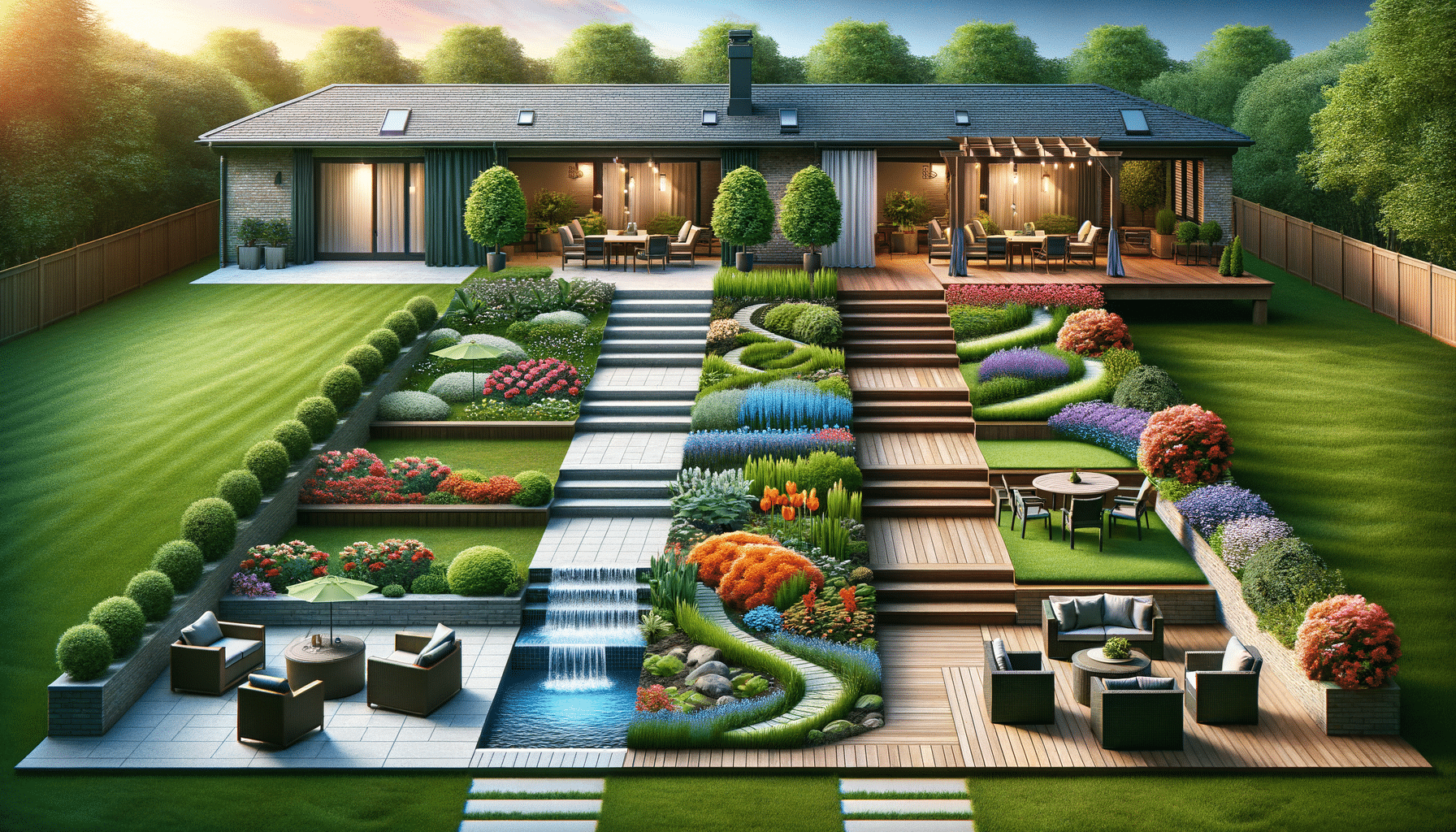
Transform Your Yard: 5 Landscaping Ideas to Elevate Your Outdoor Space
Introduction to Landscaping: Enhancing Your Outdoor Space
Landscaping is more than just arranging plants and mowing the lawn. It’s an art form that combines creativity with functionality to transform your outdoor space into a personal oasis. A well-designed landscape not only boosts the aesthetic appeal of your home but also enhances its value. With the right approach, you can create a space that reflects your personality, meets your needs, and offers a serene retreat from the hustle and bustle of daily life. In this article, we will explore five landscaping ideas that can elevate your outdoor space, making it both stylish and functional.
Incorporating Native Plants: A Sustainable Choice
One of the key considerations in landscaping is selecting the right plants. Incorporating native plants into your landscape is a sustainable choice that offers numerous benefits. Native plants are adapted to the local climate and soil conditions, which means they require less water, fertilizer, and maintenance compared to non-native species. This not only reduces your environmental footprint but also saves you time and resources.
Additionally, native plants provide habitat and food for local wildlife, promoting biodiversity. They can attract birds, butterflies, and beneficial insects, adding life and movement to your garden. When selecting native plants, consider factors such as bloom time, height, and color to ensure a harmonious and visually appealing design.
Some popular native plants to consider include:
- Wildflowers like coneflowers and black-eyed Susans
- Grasses such as little bluestem and switchgrass
- Shrubs like serviceberry and elderberry
By choosing native plants, you create a resilient and thriving landscape that complements the natural environment.
Creating Functional Outdoor Living Spaces
Landscaping is not only about beauty but also about functionality. Creating outdoor living spaces allows you to extend your home’s living area and enjoy the outdoors in comfort. Whether it’s a cozy patio for dining, a pergola for shade, or a fire pit for gathering, functional outdoor spaces can enhance your lifestyle.
When designing outdoor living areas, consider the following:
- Purpose: Determine the primary function of the space, whether it’s for relaxation, entertainment, or dining.
- Layout: Plan the layout to ensure easy movement and accessibility. Use pathways and transitions to connect different areas.
- Materials: Choose durable and weather-resistant materials for furniture and structures. Consider natural stone, wood, and metal for a timeless look.
Incorporating features like outdoor kitchens, water features, or even a small garden can add value and enjoyment to your outdoor space. By thoughtfully designing functional areas, you create a seamless blend between indoor and outdoor living.
Embracing Hardscaping: Structure and Style
Hardscaping refers to the non-living elements of landscaping, such as pathways, patios, walls, and water features. These elements provide structure and style to your outdoor space, creating a balanced and cohesive design.
Pathways and walkways guide movement and can be crafted from materials like stone, brick, or gravel. They not only connect different areas of your garden but also add texture and interest. Patios and decks offer spaces for relaxation and entertainment, and their design can be customized to suit your preferences.
Retaining walls and borders define spaces and manage slopes, while water features like ponds or fountains add a soothing element to your landscape. When planning hardscaping, consider the following:
- Material selection: Choose materials that complement your home’s architecture and the natural surroundings.
- Scale and proportion: Ensure that hardscape elements are proportionate to the size of your space and blend well with the softscape (plants and greenery).
- Maintenance: Opt for low-maintenance materials that can withstand weather conditions and require minimal upkeep.
Embracing hardscaping enhances the functionality and aesthetic appeal of your landscape, providing a solid foundation for your outdoor design.
Lighting Your Landscape: Extending Usability
Lighting is a crucial aspect of landscaping that often gets overlooked. Proper lighting extends the usability of your outdoor space into the evening hours and enhances safety and security. It also highlights the beauty of your landscape, creating ambiance and mood.
When planning landscape lighting, consider these elements:
- Pathway lighting: Use low-voltage lights along walkways and paths to guide movement and prevent accidents.
- Accent lighting: Highlight focal points such as trees, sculptures, or architectural features with spotlights or uplights.
- Ambient lighting: Create a warm and inviting atmosphere with string lights, lanterns, or LED fixtures.
Solar-powered lights are an eco-friendly option that reduces energy consumption and installation costs. By strategically placing lights, you can transform your outdoor space into a magical retreat that can be enjoyed day and night.
Conclusion: Transforming Your Landscape
Transforming your landscape is an exciting journey that combines creativity, functionality, and sustainability. By incorporating native plants, creating functional outdoor spaces, embracing hardscaping, and adding lighting, you can elevate your outdoor area to new heights. These landscaping ideas not only enhance the beauty and value of your property but also provide a personal sanctuary where you can unwind and connect with nature. Whether you’re starting from scratch or updating an existing garden, these tips will guide you in creating a landscape that reflects your style and meets your needs.


